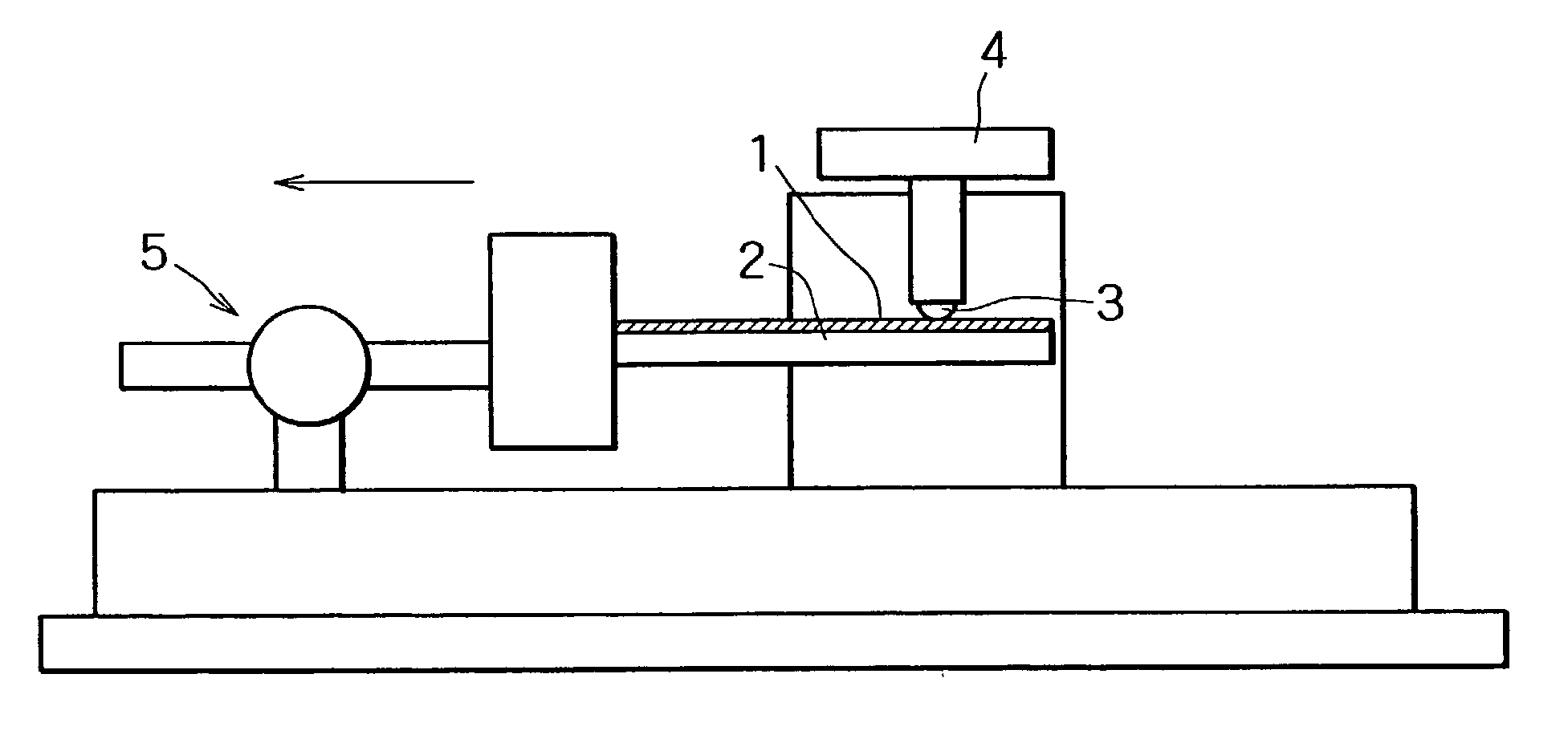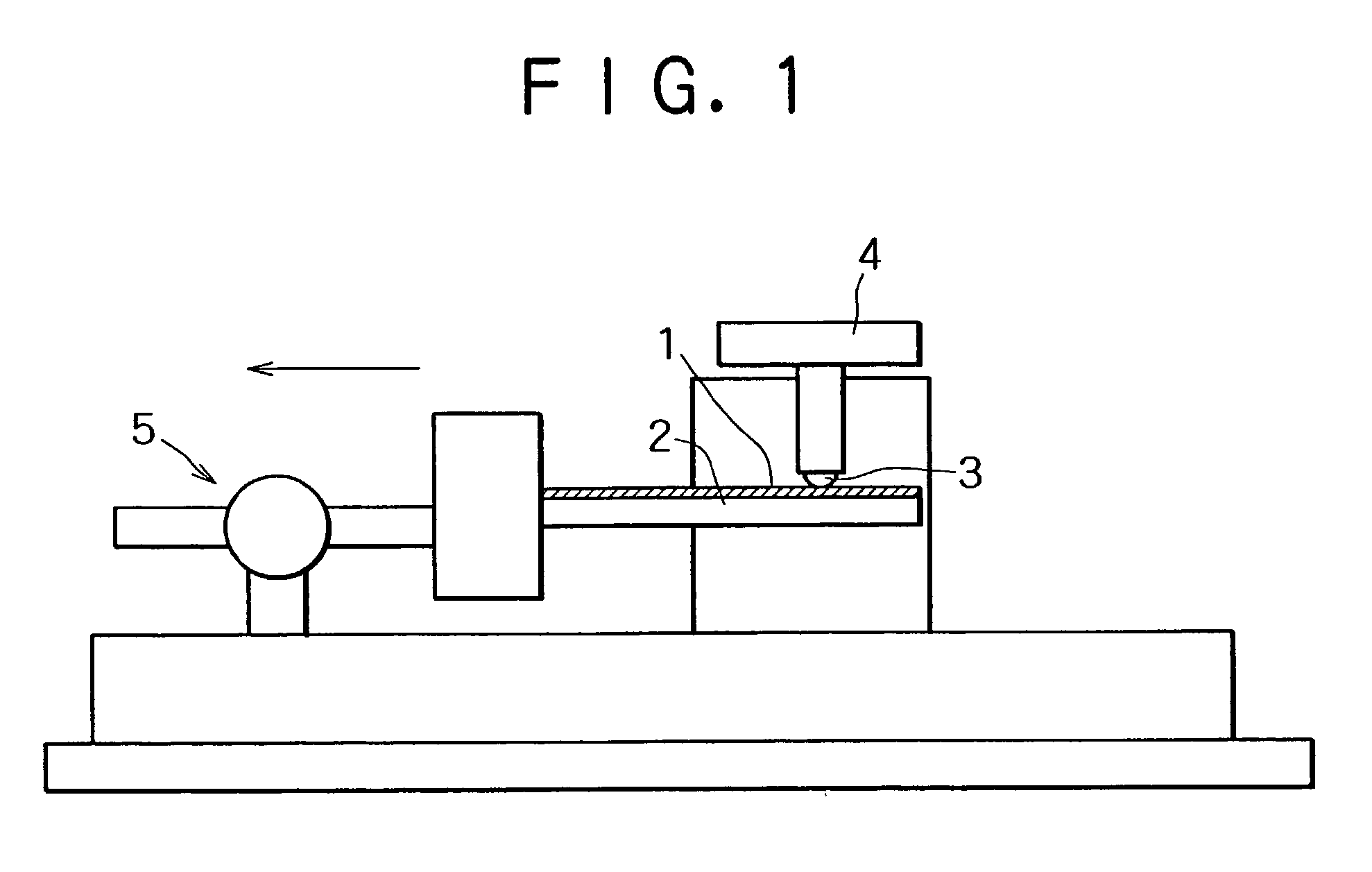Plated copper alloy material and process for production thereof
a technology of tin-plating and alloy material, which is applied in the direction of application, superimposed coating process, other domestic articles, etc., can solve the problems of low assembly efficiency, loss of advantage, and difficulty in reducing the thickness of the tin-plating layer, and achieve good workability for sharp bending without cracking, good corrosion resistance, and good electric reliability
- Summary
- Abstract
- Description
- Claims
- Application Information
AI Technical Summary
Benefits of technology
Problems solved by technology
Method used
Image
Examples
example 1
[0049] Each sample was prepared from a 0.30 mm thick sheet of copper alloy parent material (C2600) by sequential plating with nickel, copper, and tin, in the specified thickness. Their plating baths and plating conditions are shown in Tables 1 to 3. The thickness of each plating layer and the thickness ratio of the copper and tin plating layers are shown in Table 4. (For sample Nos. 1 to 15) The thickness of each plating layer was measured in the following manners.
[0050] [Measurement of Thickness of Tin Layer and Nickel Layer]
[0051] Measured by using a fluorescent X-ray thickness gauge, Model SFT156A, from Seiko Denshi Kogyo Co., Ltd.
[0052] [Measurement of Thickness of Copper Layer]
[0053] A specimen prepared by a microtome from each sample was observed under a scanning electron microscope, and its average thickness was calculated by image processing.
1 TABLE 1 Concentration Composition of nickel plating bath NiSO.sub.4.6H.sub.2O 240 g / L NlCl.sub.2.6H.sub.2O 30 g / L H.sub.3BO.sub.3 30 ...
example 2
[0080] In the same way as in Example 1, each sample was prepared from a 0.30 mm thick sheet of copper alloy parent material (C2600) by sequential plating with nickel, copper, and tin, in the specified thickness. Their plating baths and plating conditions are shown in Table 1 for nickel, Table 6 for copper and Table 3 (The amount of brightening agent was changed within 0-10 g / l.) for tin. The thicknesses of the plating layers and the thickness ratio of the copper and tin plating layers are shown in Table 7. (For sample Nos. 16 to 39) The thicknesses of the plating layers were measured in the same manner as in Example 1.
6 TABLE 6 Concentration Composition of copper plating bath CuSO.sub.4 250 g / L H.sub.2SO.sub.4 80 g / L Cl 30 mg / L Conditions of copper plating Current density 3.5 A / dm.sup.2 Temperature 30.degree. C.
[0081]
7 TABLE 7 Condition of heat treatment Layer construction Carbon Temperature Thickness Ratio of content in of heat Duration of Thickness of of Cu layer Thickness of Sn t...
example 3
[0087] The same parent material (sheet) as in Example 2 was sequentially coated with a nickel plating layer (0.3 .mu.m thick), a copper plating layer (0.15 .mu.m thick), and a tin plating layer (0.5 .mu.m thick). The plating conditions are basically the same as in Example 2, except that the current density was varied for the nickel plating layer and the temperature and current density were varied for the copper plating layer, both as shown in Table 8. The resulting samples (Nos. 40 to 50) were examined for macrothrowing power of plating. The results are shown in Table 9.
[0088] [Macrothrowing Power]
[0089] The surface and cross section of the plating player (which had not yet undergone reflowing) was examined under a scanning electron microscope. Samples were rated as good (.largecircle.) if copper grains are smaller than 0.25 .mu.m in average diameter. Samples were rated as poor (.times.) if copper grains are larger than 0.25 .mu.m in average diameter. There is a relationship between...
PUM
| Property | Measurement | Unit |
|---|---|---|
| thickness | aaaaa | aaaaa |
| thickness | aaaaa | aaaaa |
| current density | aaaaa | aaaaa |
Abstract
Description
Claims
Application Information
 Login to View More
Login to View More - R&D
- Intellectual Property
- Life Sciences
- Materials
- Tech Scout
- Unparalleled Data Quality
- Higher Quality Content
- 60% Fewer Hallucinations
Browse by: Latest US Patents, China's latest patents, Technical Efficacy Thesaurus, Application Domain, Technology Topic, Popular Technical Reports.
© 2025 PatSnap. All rights reserved.Legal|Privacy policy|Modern Slavery Act Transparency Statement|Sitemap|About US| Contact US: help@patsnap.com


